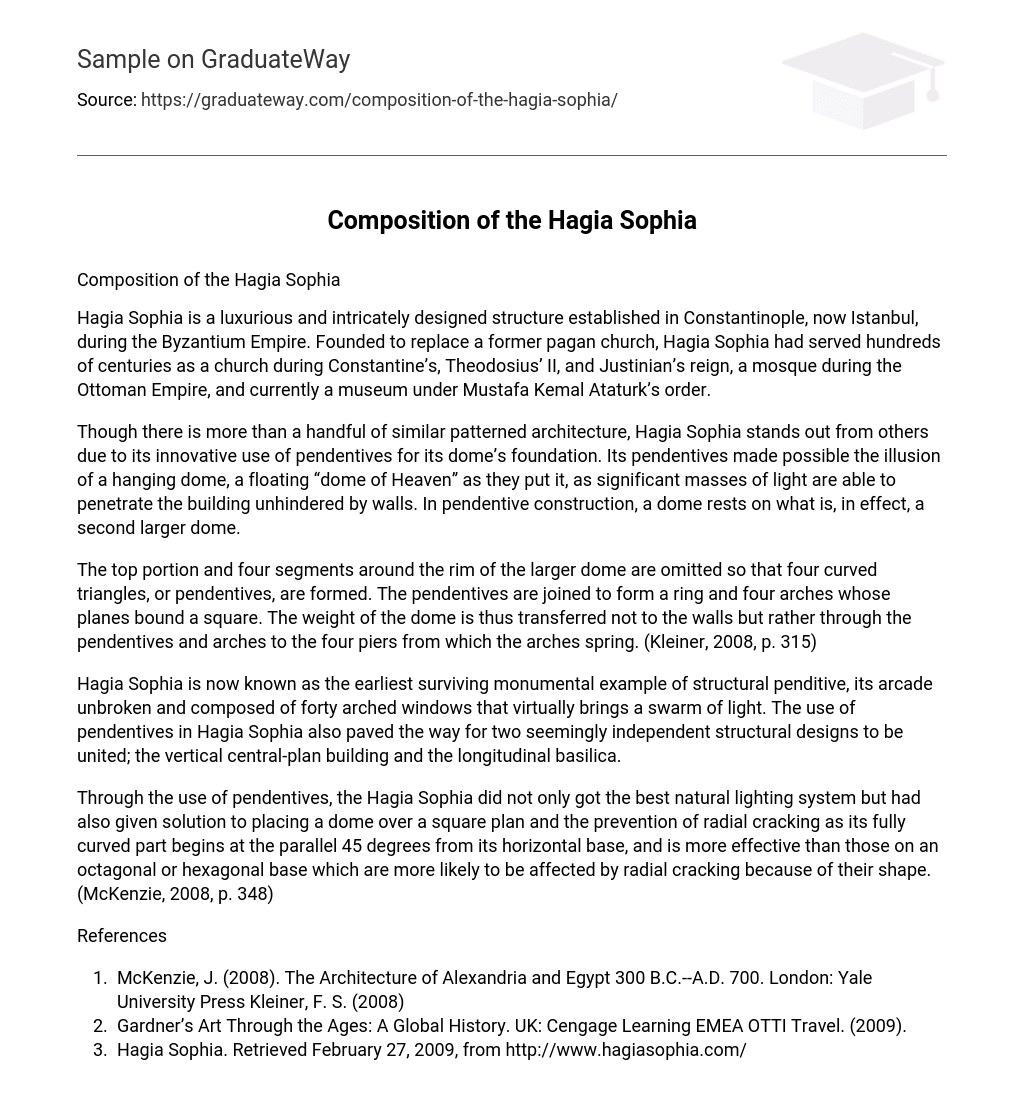Composition of the Hagia Sophia
Hagia Sophia is a luxurious and intricately designed structure established in Constantinople, now Istanbul, during the Byzantium Empire. Founded to replace a former pagan church, Hagia Sophia had served hundreds of centuries as a church during Constantine’s, Theodosius’ II, and Justinian’s reign, a mosque during the Ottoman Empire, and currently a museum under Mustafa Kemal Ataturk’s order.
Though there is more than a handful of similar patterned architecture, Hagia Sophia stands out from others due to its innovative use of pendentives for its dome’s foundation. Its pendentives made possible the illusion of a hanging dome, a floating “dome of Heaven” as they put it, as significant masses of light are able to penetrate the building unhindered by walls. In pendentive construction, a dome rests on what is, in effect, a second larger dome.
The top portion and four segments around the rim of the larger dome are omitted so that four curved triangles, or pendentives, are formed. The pendentives are joined to form a ring and four arches whose planes bound a square. The weight of the dome is thus transferred not to the walls but rather through the pendentives and arches to the four piers from which the arches spring. (Kleiner, 2008, p. 315)
Hagia Sophia is now known as the earliest surviving monumental example of structural penditive, its arcade unbroken and composed of forty arched windows that virtually brings a swarm of light. The use of pendentives in Hagia Sophia also paved the way for two seemingly independent structural designs to be united; the vertical central-plan building and the longitudinal basilica.
Through the use of pendentives, the Hagia Sophia did not only got the best natural lighting system but had also given solution to placing a dome over a square plan and the prevention of radial cracking as its fully curved part begins at the parallel 45 degrees from its horizontal base, and is more effective than those on an octagonal or hexagonal base which are more likely to be affected by radial cracking because of their shape. (McKenzie, 2008, p. 348)
References
- McKenzie, J. (2008). The Architecture of Alexandria and Egypt 300 B.C.–A.D. 700. London: Yale University Press Kleiner, F. S. (2008)
- Gardner’s Art Through the Ages: A Global History. UK: Cengage Learning EMEA OTTI Travel. (2009).
- Hagia Sophia. Retrieved February 27, 2009, from http://www.hagiasophia.com/





